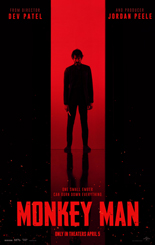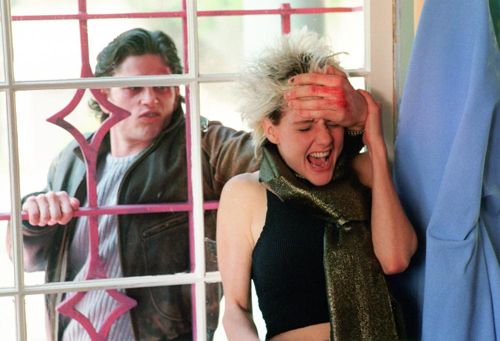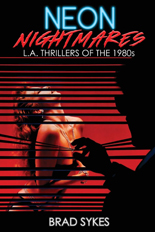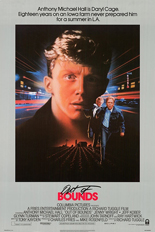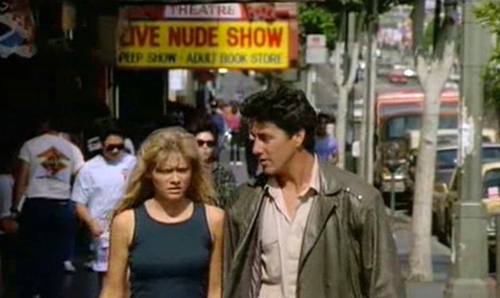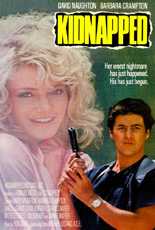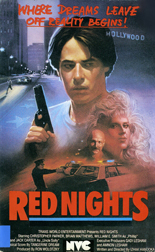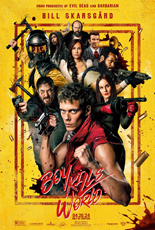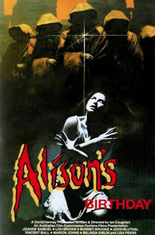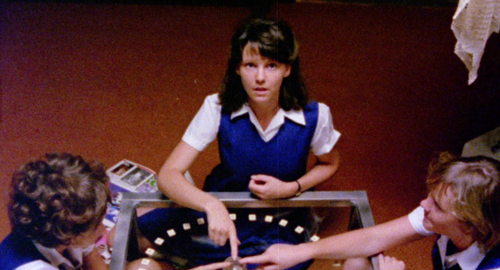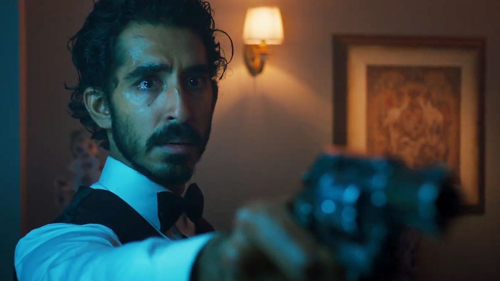

Those less familiar with the source material for David Lowery’s The Green Knight might’ve been surprised by that decidedly nonviolent fantasy flick. And you wouldn’t be alone. Maybe the role even left its lead, Dev Patel, somewhat hungry for a more straightforward revenge tale. All he would need to do is write, direct and produce it himself.
Enter Monkey Man, Patel’s directorial debut that offers a frenetic and brutal film that stabs, slices and punches past a mob of John Wick imitators. (Yes, even you, The Beekeeper.)
That’s not to say Monkey Man is devoid of meaning, either. No, it doesn’t uproot the genre in the same way as Park Chan-wook’s Oldboy or Michael Sarnoski’s Pig. It does, however, give us a thriller as drenched in Indian culture, politics and mythology as it is by blood and dismembered limbs.
Set in the fictional city of Yatana, Kid (Patel) lives in poverty. He makes a “living” donning a monkey mask and intentionally losing boxing (but also kind of pro wrestling) matches. Kid saves what little money he can with the plans of killing a twisted police chief, Rana (Sikandar Kher), and an equally corrupt religious leader, Baba (Makarand Deshpande). Years prior, Rana murdered Kid’s mother and burned down his hometown under Baba’s direction to expand the figure’s holy empire. By killing these two and every goon at their disposal, Kid seeks to tear out of the heart of Yatana’s criminal underground.
Granted, it can sometimes be difficult to discern some of Monkey Man’s basic plot detail, given its constantly moving and whiplash-inducing cinematography. The technique works exceedingly well where it matters most (e.g., fight scenes and urban B-roll), but distracts from key dialogue. Granted, Monkey Man is a film filled with necessary compromises to work around stolen camera shots and, of course, Patel’s broken hand.
These setbacks could account for much of Monkey Man’s shortcomings, and more often than not, they don’t interrupt the action at hand. What truly hurts the film are formulaic character motivations and grossly repetitive framing. (Take a shot every time the camera follows a character to the ground like an ax splitting wood and you’d black out before the film’s second act.)
Again, it’s hard to hold these issues too much against the film knowing how much of a beast it was to make. Still, one could easily wonder how much more memorable Monkey Man could be if it exercised even slightly more restraint, especially when it comes to the few dialogue-driven scenes.
Granted, most of us didn’t show up for the talking. The film thrives with its low-to-the ground, drag-out fights. A attempted assassination in a bathroom quickly followed by a confrontation with an ax-wielding brothel owner are among Monkey Man’s most riveting sequences. Similarly, the movie’s final two fight scenes offer an equally gory as it is satisfying conclusion, even though the cinematography loses a bit of its luster by that point.
Other than a notch in what we’ll hopefully cascade into a storied career for Patel, Monkey Man doesn’t pack a lot of a staying power. At the very least, however, it’s far from a boring or uninspired revenge thriller. Perhaps a sequel could suture some of the film’s more apparent gashes and give its protagonist a bit more depth. (Hopefully Patel’s hand will have fully healed by then, too.) —Daniel Bokemper

